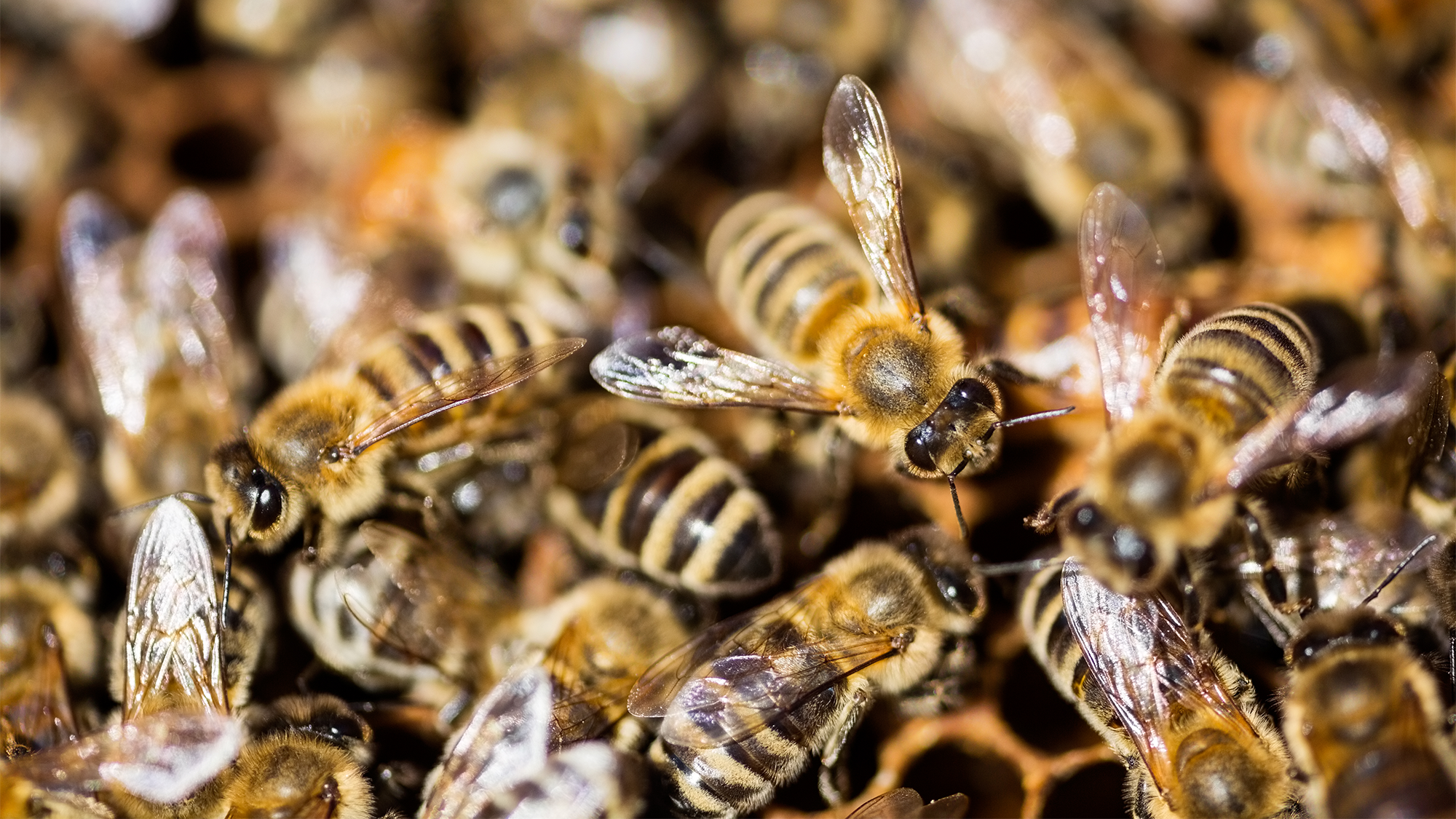

Social learning and knowledge sharing from generation to generation is a hallmark of a culture among living things. While it’s been documented in many animals including tiny naked mole rats, songbirds, sperm whales, and humans, early social learning has only just been demonstrated in insects.
A study published March 9 in the journal Science is offering evidence that generational knowledge is fundamental for honeybees.
[Related: The first honeybee vaccine could protect the entire hive, starting with the queen.]
“We are beginning to understand that, like us, animals can pass down information important for their survival through communities and families. Our new research shows that we can now extend such social learning to include insects,” said study co-author and University of California San Diego biologist James Nieh, in a statement.
Nieh and a team of researchers took a deeper look at a bee’s “waggle dance.” Bees have a highly organized community structure and use the waggle dance to tell hivemates where critical food resources are located with an intricate series of movements. In the waggle dance, bees circle around in figure-eight patterns, while wagging their bodies during the central part of the dance. It’s kind of like a breakdance performed at a breakneck speed, with each bee moving a body length in less than one second.
The very precise motions in the dance translate visual information from the environment around the hive, Sending accurate information is especially remarkable since bees must move rapidly across an often uneven honeycomb hive surface. The team discovered that this dance is improved by learning and can be culturally transmitted.

Nieh and fellow researchers Shihao Dong, Tao Lin, and Ken Tan of the Chinese Academy of Sciences created colonies with bees that were all the same age as an experiment to watch how experienced forager bees pass this process down to younger, less-experienced nestmates.
Bees typically begin to dance when they reach the right age and always follow the lead of experienced dancers first, but in these experimental colonies, they weren’t able to learn the waggle dance from older bees.
[Related: Bees choose violence when attempting honey heists.]
By comparison, the bees that shadowed other dancers in the control colonies that had a mix of different aged bees didn’t have problems learning to waggle. The acquired social cues stayed with them for the roughly 38 day lifespan of the bees in the study.
Those that didn’t learn the correct waggle dance in that critical early stage of learning could improve by watching other dancers and by practicing, but they couldn’t correctly encode the distance which created distinct “dialects.” The dialect was then maintained by the bees for the rest of their lives.
“Scientists believe that bee dialects are shaped by their local environments. If so, it makes sense for a colony to pass on a dialect that is well adapted to this environment,” said Nieh. The results therefore provided evidence that social learning shapes honey bee signaling as it does with early communication in many vertebrate species that also benefit from learning.
The next steps for this research is better understanding the role that the environment plays in shaping bee language. Additionally, the team would like to know more about external threats like pesticides to bees that could disrupt early language learning.
“We know that bees are quite intelligent and have the capacity to do remarkable things,” said Nieh. “Multiple papers and studies have shown that pesticides can harm honey bee cognition and learning, and therefore pesticides might harm their ability to learn how to communicate and potentially even reshape how this communication is transmitted to the next generation of bees in a colony.”
